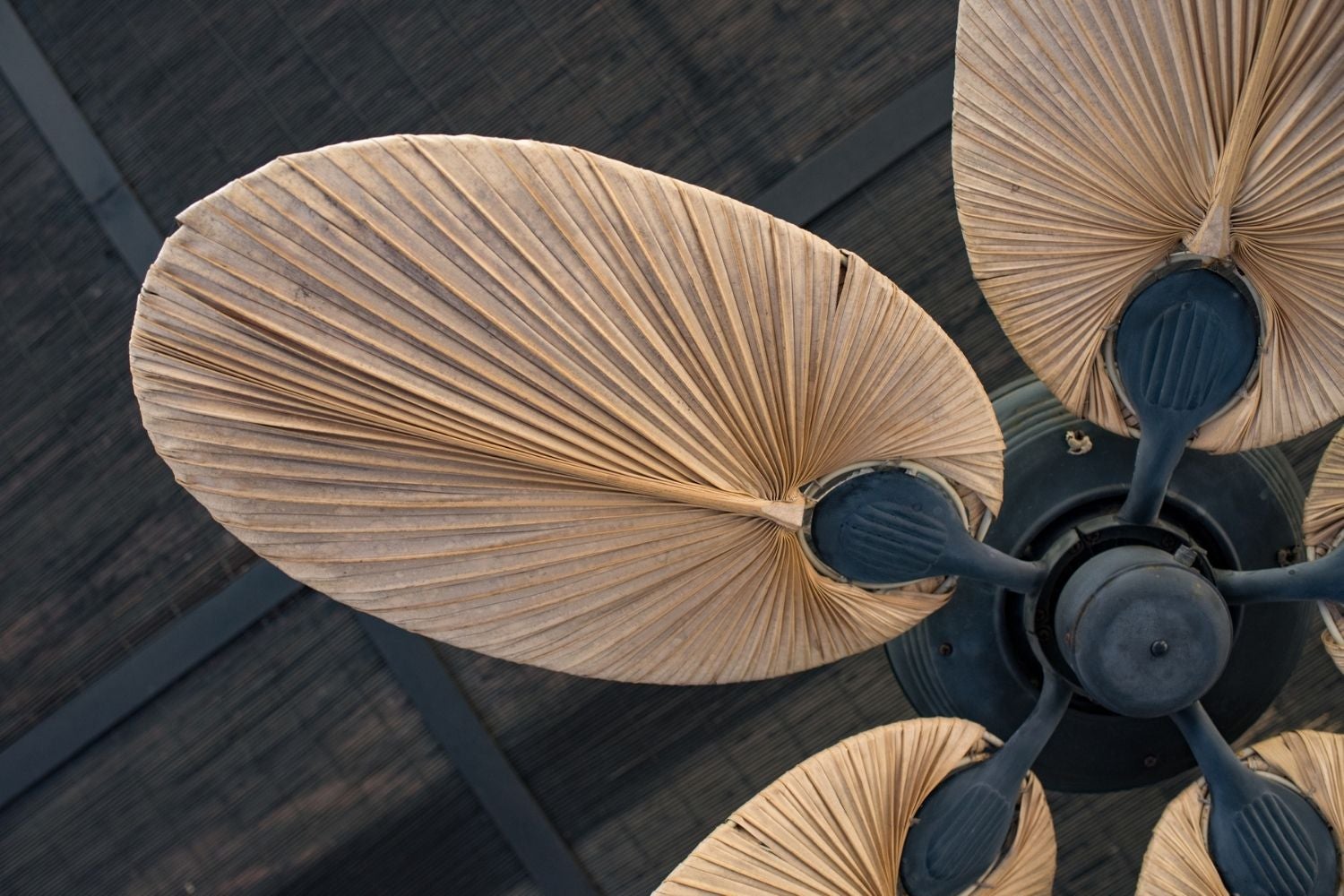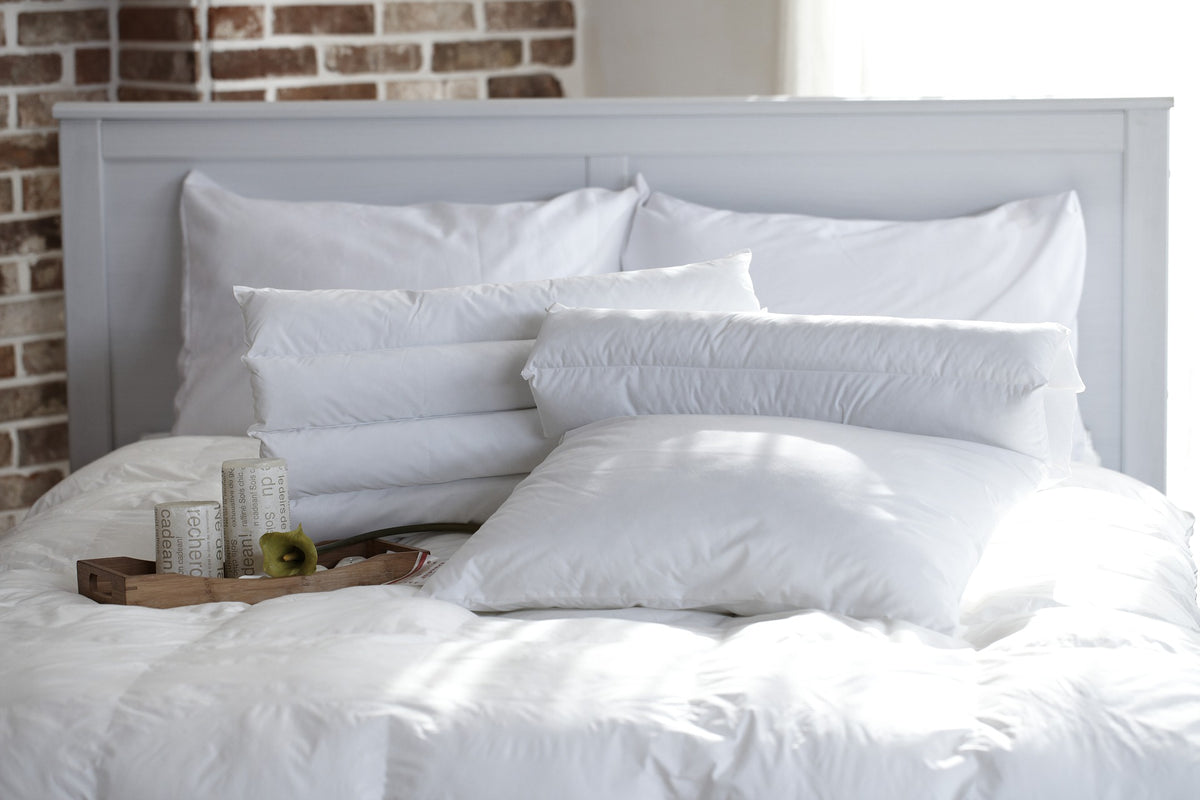

Articles
When Were Curtains Invented
Modified: January 22, 2024
Discover the fascinating history of curtains in this informative article. Learn when curtains were first invented and how they have evolved over time.
(Many of the links in this article redirect to a specific reviewed product. Your purchase of these products through affiliate links helps to generate commission for Storables.com, at no extra cost. Learn more)
Introduction
Curtains are an integral part of interior design, adding both aesthetic beauty and practical functionality to any space. They not only provide privacy and regulate natural light, but also enhance the overall ambiance of a room. But have you ever wondered when curtains were first invented and how they have evolved over time?
In this article, we will delve into the fascinating history of curtains, exploring their ancient origins, their transformation throughout the middle ages and renaissance, and their modern-day developments. We will also take a closer look at the various curtain styles and innovations that have emerged over the years.
From the earliest iterations of drapery used by ancient civilizations to the sophisticated curtain designs we see today, curtains have come a long way, reflecting the ever-evolving needs and tastes of humanity.
So, let’s embark on a journey through time and discover the captivating story of curtain invention and innovation.
Key Takeaways:
- Curtains have a rich history, evolving from ancient practical partitions to modern works of art. They reflect human ingenuity and the desire to create beauty and comfort in our surroundings.
- From opulent tapestries in medieval Europe to modern motorized and smart curtains, the evolution of curtain design showcases the ever-changing needs and tastes of humanity. Curtains are not just functional but a powerful tool for self-expression and artistry.
Read more: When Were Rugs Invented
Ancient Origins
The origins of curtains can be traced back to ancient civilizations, where they were first used for practical purposes rather than decorative ones. In ancient Egypt, for example, curtains were made from linen and used to block out the intense sunlight and heat.
Similarly, in ancient Mesopotamia, curtains made from woven reeds or animal hides were used to divide living spaces and provide privacy. These early curtains were more like rudimentary partitions, serving a functional role rather than being ornamental.
In ancient China, on the other hand, silk was introduced as a luxurious fabric for curtains. Silk curtains adorned the palaces of emperors and nobles, symbolizing wealth and status. These curtains were often intricately embroidered with beautiful patterns and designs.
As civilization progressed, curtains began to serve not only practical purposes but also aesthetic ones. In ancient Greece, for instance, curtains were used in theaters to create dramatic effects and enhance the visual appeal of performances.
During the Roman era, curtains became more sophisticated, with the introduction of curtains made from luxurious fabrics such as velvet and brocade. Colored and patterned curtains adorned the windows and doorways of wealthy Roman households, adding a touch of elegance and grandeur to their interiors.
Overall, ancient societies played a crucial role in the development of curtains, establishing the foundation for their later transformation into both functional and decorative elements in interior design.
Middle Ages and Renaissance
The Middle Ages marked a significant shift in the use and design of curtains. During this time, curtains began to serve as a symbol of wealth and social status. They were often made from opulent fabrics like silk, satin, and damask, adorned with gold embroidery and intricate patterns.
In medieval Europe, castles and noble residences featured grand halls and chambers, where curtains were used to divide spaces and create privacy. These curtains, known as tapestries, were not only functional but also served as valuable works of art. They depicted scenes from biblical stories, epic battles, and mythological tales, showcasing the wealth and cultural refinement of the inhabitants.
The Renaissance period brought with it a renewed appreciation for art, beauty, and classical aesthetics. This had a profound impact on curtain design, as curtains became an integral part of the overall interior décor. Richly colored and elaborately designed curtains adorned the windows and doorways of palaces, reflecting the refined tastes of the noble class.
The invention of the printing press in the 15th century also contributed to advancements in curtain design during the Renaissance. Intricate patterns and motifs could now be reproduced more easily and at a larger scale, allowing for more intricate and detailed curtain designs.
With the growing popularity of theater during the Renaissance, stage curtains became an essential component of theatrical performances. Elaborate curtains made from luxurious fabrics, often adorned with fringes and tassels, added a touch of grandeur and drama to the stage.
Overall, the Middle Ages and Renaissance periods marked a significant shift in curtain design, turning them into highly decorative elements that showcased wealth, status, and artistic expression.
The Industrial Revolution and Modern Curtains
The Industrial Revolution in the 18th and 19th centuries brought about significant advancements in technology and manufacturing processes. This had a profound impact on the production and design of curtains, making them more accessible to a wider range of people.
During this time, textile mills emerged, utilizing mechanized looms to produce fabrics on a larger scale. This led to the availability of a variety of affordable textiles, such as cotton and linen, which were used in the making of curtains.
The introduction of new dyeing techniques also allowed for a wider range of colored curtains, giving homeowners more options for coordinating with their interior design. Advancements in sewing machines made it easier and faster to produce curtains, further increasing their availability and affordability.
As the 20th century approached, the concept of modernism began to influence curtain design. Clean lines, minimalist aesthetics, and functional designs became the new trend. Curtains moved away from elaborate patterns and heavy fabrics, and instead embraced simplicity and functionality.
Modern curtains also saw the introduction of new materials and innovations. Synthetic fabrics like polyester became popular due to their durability and resistance to wrinkles. Blackout curtains were invented, providing maximum light blockage and privacy, making them ideal for bedrooms and theatres.
Technological advancements also revolutionized curtain control mechanisms. Manual pulleys and cords were replaced by motorized systems that allowed for remote control operation. This innovation not only made it more convenient to open and close curtains but also added a touch of luxury and sophistication to modern living spaces.
Today, curtains are available in a wide range of designs, styles, and fabrics to suit every taste and need. From sheer curtains that gently filter light to heavy drapes that provide insulation, curtains continue to play a vital role in shaping the ambiance and aesthetics of a room.
Curtain Styles and Innovations
Curtain styles have evolved significantly over time, reflecting changes in fashion, design trends, and advancements in technology. Here, we will explore some of the popular curtain styles and notable innovations that have shaped the industry.
Read more: When Were Gutters Invented
1. Classic Draperies:
Classic draperies are timeless and elegant, often made from luxurious fabrics like silk, velvet, or brocade. They feature full-length panels that are gathered or pleated at the top, creating a graceful and flowing drape. Classic draperies are commonly used in formal living rooms, dining areas, and bedrooms.
2. Sheer Curtains:
Sheer curtains are lightweight and translucent, allowing natural light to filter through while providing a level of privacy. They are typically made from lightweight fabrics like chiffon or voile and are commonly used in living rooms, bedrooms, and dining areas where a soft, airy ambiance is desired.
3. Roman Shades:
Roman shades are a popular alternative to traditional curtains. They are made from a single piece of fabric that folds up horizontally when raised and lies flat when lowered. This style offers a clean and contemporary look, making them suitable for modern interiors. Roman shades are often used in kitchens, bathrooms, and offices.
4. Tab Top Curtains:
Tab top curtains feature fabric loops or tabs along the top edge, through which a curtain rod is threaded. They create a casual and relaxed look and are commonly used in bohemian or coastal-inspired interiors. Tab top curtains are particularly suited for informal living spaces, bedrooms, and children’s rooms.
Read more: When Were Wine Glasses Invented?
5. Motorized Curtains:
Motorized curtains provide convenience and luxury with the use of automated control systems. With just a touch of a button or through programmable settings, motorized curtains can be effortlessly opened, closed, or adjusted to desired heights. This innovation adds a modern and sophisticated touch to any space.
6. Smart Curtains:
With the rise of smart home technology, curtains can now be controlled using voice commands, mobile apps, or integrated with other smart devices. These smart curtains can be scheduled to open and close at specific times, providing enhanced privacy, energy efficiency, and convenience.
These are just a few examples of the many curtain styles and innovations available today. Whether you prefer traditional elegance, contemporary minimalism, or high-tech convenience, there is a curtain style to suit every taste and requirement.
Conclusion
Through centuries of design, innovation, and cultural shifts, curtains have evolved from simple practical partitions to intricate works of art that enhance the beauty and functionality of our living spaces. From the ancient origins of linen and silk curtains in Egypt and China to the opulent tapestries of the Middle Ages and the modern-day innovations in motorized and smart curtains, we have witnessed the transformation of this essential element of interior design.
The invention and widespread availability of textile mills during the Industrial Revolution made curtains more accessible and affordable to a wider range of people. With advancements in technology, we have seen the introduction of new materials, dyeing techniques, and control mechanisms, revolutionizing the way we use and interact with curtains.
Today, curtains come in a vast array of styles, materials, and designs, allowing homeowners to personalize their spaces and create the ambiance they desire. Whether it’s classic draperies for a touch of elegance, sheer curtains for a soft and airy feel, or motorized curtains for convenience and luxury, there is a curtain style to suit every taste and preference.
Curtains not only provide privacy and regulate natural light but also serve as a decorative element that enhances the overall aesthetic of a room. They can transform a space, adding drama, warmth, or a sense of tranquility. The right choice of curtains can make a significant impact on the overall ambiance and mood of a room.
As we embrace the advancements in technology and design, we are likely to witness further innovations in curtain materials, control systems, and energy efficiency. Curtains will continue to adapt to our evolving lifestyles and preferences, ensuring that they remain an essential element of interior design.
So, the next time you draw your curtains, take a moment to appreciate the rich history and craftsmanship that has gone into their creation. They are not just pieces of fabric but a testament to human ingenuity and the desire to create beauty and comfort in our surroundings.
In conclusion, curtains have come a long way from their humble beginnings. They have transcended their functional origins to become a powerful tool for self-expression, artistry, and enhancing the aesthetics of our living spaces.
Frequently Asked Questions about When Were Curtains Invented
Was this page helpful?
At Storables.com, we guarantee accurate and reliable information. Our content, validated by Expert Board Contributors, is crafted following stringent Editorial Policies. We're committed to providing you with well-researched, expert-backed insights for all your informational needs.














0 thoughts on “When Were Curtains Invented”